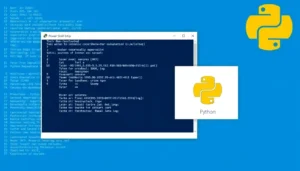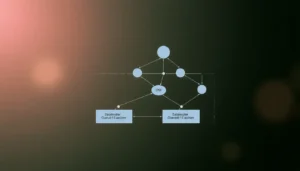iPhone 17 release analysis: Navigating headwinds and upgrade cycles
- THE MAG POST

- Sep 4
- 6 min read

iPhone 17 release analysis opens at a moment when developers, financiers, and everyday users are recalibrating expectations for premium smartphones. Apple’s upcoming launch sits amid a mix of macro uncertainty, tariff chatter, and fierce competition, yet also amid a disciplined focus on ecosystem cohesion and software-driven advantages. This introduction frames the core tensions: can a thinner chassis and a streamlined camera portfolio still deliver a compelling upgrade narrative to a market that has grown accustomed to iterative gains? By examining pricing, design choices, and strategic positioning, we can map a nuanced path for both consumers and investors.
Market headwinds for the iPhone 17: Pricing, cameras, and consumer demand
Launch timing collides with cautious budgets, and Apple must balance premium pricing with perceptible value as consumers weigh upgrades against stagnating incomes. The iPhone 17’s fate will hinge on how well it translates innovation into tangible benefits for everyday users, not just newer specs on a spec sheet. In this section, we examine how pricing psychology, camera strategy, and consumer sentiment interact to shape demand in a crowded fall season.
Pricing trajectories and consumer perceptions
Pricing dynamics in flagship smartphones are less about sticker price and more about perceived value. If the iPhone 17 carries a higher price, Apple will need to demonstrate meaningful gains in battery life, reliability, and ecosystem advantages that justify the premium. Consumers compare current devices against upgraders who now own technology that feels four years old, suggesting Apple’s challenge is not only a dollar amount but a narrative of incremental improvement versus cost. Pricing strategy will thus be a determinant of return visits from existing customers and a magnet for new buyers who crave stability in an uncertain macro environment.
The upgrade calculus also depends on financing options, trade-ins, and carrier promotions, which can soften upfront costs and extend the perceived value of immediate ownership. In practice, even modest improvements—through software efficiency, long battery life, or refined integration with wearables and services—can produce outsized impact on willingness to exchange an older model for the newest one. The key for Apple is to translate that value into a compelling, clearly communicated promise that resonates beyond the glossy launch slides.
Camera strategy and feature trade-offs
The iPhone 17 is expected to simplify the camera system, potentially offering fewer physical lenses than the Pro models. That compression can be a double-edged sword: it may reduce costs and weight, but it risks narrowing the perceived imaging capability when compared with more feature-rich peers. The crucial question becomes whether software-based enhancements, computational photography, and improved low-light performance can compensate for hardware reductions in the minds of consumers and professionals alike.
From a product-design perspective, the trade-off between a lean hardware footprint and photography versatility will signal Apple’s priorities. If the company can deliver consistent, studio-grade results through software optimizations, the omission of multiple cameras could be framed as a deliberate efficiency, freeing energy and improving battery performance. The outcome will depend on how convincingly Apple communicates the practical benefits of the new approach to a broad audience that values both speed and image quality.
Design shifts and the upgrade dilemma
Bold design choices often catalyze upgrade cycles, but in 2025 the market is less forgiving of superficial changes and more responsive to durable gains in usability and ecosystem cohesion. The iPhone 17’s form factor, weight, and battery life will be read against the backdrop of competing devices and user expectations built over years of premium devices.
Form factor and battery life trade-offs
A slimmer frame can enhance grip comfort and pocketability, yet a thinner chassis frequently comes with trade-offs in battery capacity. If Apple can extract more endurance through smarter power management and more energy-dense components, the perceived benefit may offset the slightly smaller battery. The challenge lies in maintaining a balance between a sleeker silhouette and reliable all-day performance that satisfies heavy smartphone users and casual buyers alike.
In addition, a lighter device could influence heat management, which in turn affects sustained performance during gaming or streaming. Apple’s software optimizations and thermal design will be critical to ensuring that the thinner device does not compromise user experience in real-world conditions. The net effect will be a nuanced signal about whether form factor improvements translate into tangible, everyday advantages.
Value perception versus premium features
Consumers often weigh value against price when evaluating new devices. If the iPhone 17 emphasizes a refined user experience, seamless service integration, and a more efficient silicon stack, it can justify premium pricing even with a modest hardware upgrade. Conversely, if feature inflation outpaces perceived gains, buyers may hesitate to upgrade. In this milieu, Apple’s ability to articulate practical benefits—such as longer battery life, faster app load times, and stronger privacy protections—will determine whether affordability resonates with flagship ambitions.
Beyond hardware, the broader service ecosystem—including Arcade, TV+, iCloud, and secure authentication—plays a starring role in perceived value. When the upgrade promise includes a more holistic experience rather than isolated improvements, customers are more willing to accept premium costs for a long-term, integrated technology platform.
Economic context: Tariffs, competition, and supply chains
Macroeconomic and geopolitical factors are central to any premium device’s trajectory. Tariffs, currency fluctuations, and supply-chain shifts influence production costs and retail pricing, shaping how aggressively a company can position a new model in the market. This section unpacks how external constraints interact with internal product decisions to shape the iPhone 17 rollout.
Tariffs and pricing resilience
Tariff policy can alter the price elasticity of demand for high-end devices. If duties rise or supply constraints tighten, Apple may be compelled to adjust its pricing strategy, potentially transferring some costs to consumers or absorbing them to preserve volume. Either path affects demand forecasts and the smoothness of the launch window, particularly in key markets where price sensitivity is pronounced and carrier promotions are a common path to purchase.
In response, Apple’s supply-chain resilience—diversified sourcing, regional assembly, and efficient logistics—becomes a strategic buffer. The company’s ability to mitigate tariff-related margin pressure without sacrificing brand position will be as important as any hardware upgrade in determining the first-year performance of the iPhone 17.
Competitive landscape and alternative devices
Rival devices and market rivals continue to influence consumer decisions. While Apple’s brand strength remains formidable, competing ecosystems and price-tier options exert pressure on the upgrade cycle. Consumers may opt for midrange devices if those options offer similar performance at a lower cost, particularly when financing and trade-ins are feasible. The result is a market where differentiation hinges on the total value proposition—camera quality, software experience, ecosystem lock-in, and customer support—rather than hardware alone.
Analysts note that growth in the broader smartphone category may compress as markets mature, elevating the importance of non-physical attributes like privacy features, platform longevity, and seamless cross-device experiences. Apple’s response will shape not only the iPhone’s immediate reception but also the company’s longer-run positioning amid intensifying competition.
Investor and user implications
For investors and everyday users, the iPhone 17 release carries implications beyond a single product launch. The balance of pricing, features, and ecosystem advantages will influence both market sentiment and individual buying decisions as fall launches approach.
Upgrades and market expectations
Historically, the majority of iPhone upgrades come from customers whose devices are several years old. If the iPhone 17 offers meaningful but restrained improvements, the upgrade wave may arrive gradually, driven by perceived value rather than sheer novelty. Analysts will watch unit forecasts, carrier incentives, and cross-device adoption to gauge whether Apple sustains robust demand or encounters a more cautious trajectory that emphasizes long-term customer retention.
From a portfolio perspective, the anticipation around upgrade timing can shape earnings visibility and investor confidence. The market often rewards a steady, predictable upgrade cycle more than a breakthrough that fails to translate into broad-based adoption. Apple’s communications around reliability, security, and ecosystem benefits will influence how confidently the stock is positioned ahead of the holiday season.
What Apple's approach implies for consumers
For consumers, the takeaway centers on value, compatibility, and long-term use. If the iPhone 17 stacks practical improvements with a coherent software story, buyers may perceive a compelling reason to upgrade. The decision will depend on personal needs—camera usage, battery endurance, and how deeply one relies on Apple services. Price sensitivity will vary by region and by access to financing, but the core question remains: does the upgrade contribute to a noticeably better daily experience?
In sum, Apple’s strategy appears to hinge on an integrated narrative—one that ties hardware refinements to ecosystem advantages and long-term reliability. Those elements collectively determine whether the iPhone 17 becomes a catalyst for growth or a cautious, selective purchase that signals a more measured market cycle ahead.
Key Takeaways
Concise implications for consumers
Expect a refined but not radical upgrade with a focus on efficiency, battery life, and software synergy. Value will be defined by ecosystem integration and real-world usability rather than headline camera numbers alone.
Financing options and trade-ins will continue to shape purchase decisions, making the decision to upgrade as much about total cost of ownership as about the device itself.
Strategic guidance for investors
Investors should monitor pricing strategy, tariff developments, and supply-chain resilience alongside unit forecasts. A clear, value-driven narrative from Apple around longevity and ecosystem advantages can support steady upside even in a headwind-prone environment.
Aspect | Takeaway |
Pricing | Premium pricing with potential hikes; impact depends on perceived value |
Cameras | Trade-off between hardware simplification and software-driven imaging gains |
Upgrade Cycle | Upgrades likely from older devices; financing trades shape demand |
Tariffs | Tariffs influence margins and pricing strategy in key markets |
Ecosystem | Strength of services and privacy features supports perceived value |






















































Comments